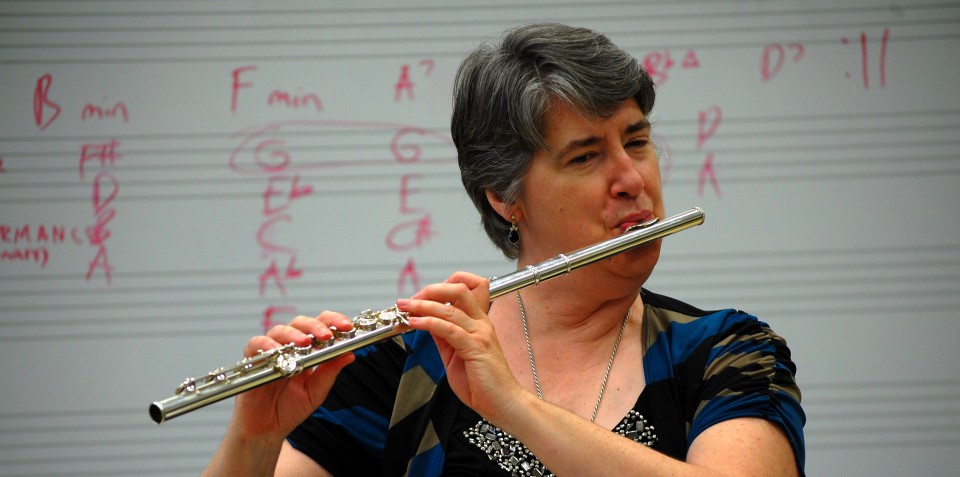Very frequently when I’m doing clinics, I ask flute students the difference between blowing a note in the low register versus blowing a second or third octave note. They will report to me that they were told by their band teacher to blow warm air for low notes and cold air for high notes. I’ve been pondering the veracity of that assertion for a while now. Initially it seemed to me like it could be a good way to conceptualize the difference between the registers. However, the more I’ve mulled it over, the more problems I see both with the concept and with how it manifests in students’ playing.
Let’s first look at how this concept is presented. If you open your mouth in an “O” shape and blow gently on your hand, the air hitting your hand is indeed warm. Then if you shape a flute sized aperture with your lips and blow at your hand, you will feel a much faster, concentrated, cooler air stream hitting your hand. So far so good. Seems like a good analogy until you actually put a flute on your face.
If you blow on a flute with a large enough aperture to have a noticeably warmer temperature in the air stream, the low notes are guaranteed to be soft, unfocused, lacking projection and likely flat. If you know a flutist who can play with a strong, focused sound in every register, ask to examine the temperature of the air column while they play in different registers. I’m sure you will find there is no appreciable difference. What you will find is that they blow with a uniformly strong air column that varies in intensity according to dynamics, but maintains the speed of the air column regardless of dynamic. This is how the finest flutists can play with a strong, focused, projecting sound in the low register and can play an exquisitely soft high note with control. They know how to maintain the speed of the air column and change the direction of the air for different registers and for different dynamic levels.
As always, playing with a strong, focused, characteristic flute sound is understanding how to change the direction of the air while maintaining the speed of the air column. The PneumoPro is an invaluable tool for visualizing this concept. Another demonstration you can do with your students is to have them pair off. One student plays and the other holds their hand close to the face of the other student and reports whether the direction of the air is changing and whether the air column feels concentrated or diffuse. You will find that kids pick up quickly the difference concentrating the air stream can make for their sound in all registers. Even your beginners will have a focused and characteristic sound if you teach them to always concentrate the air coumn and effect changes in register by changing the direction of the air.
Now you know why I think the whole warm air, cold air analogy doesn’t have much value as way of conceptualizing register changes and dynamic control. It causes more problems than it solves for the students.
If you find these entries useful, please subscribe, share with your colleagues and come back regularly for more flute tips. Feel free to comment. If you have a topic you would like to see explored more fully, you can contact me privately on Facebook or email me at dr_cate@sbcglobal.net. For information about clinics and workshops click here.

YES! The first thing I usually have to explain when a new student has been started on flute by a band director rather than by a flutist is having to debunk the warm air/cold air mythology, which is tricky, since they’ve learned to trust their director and don’t know me yet. One lesson later, though, when their low register sounds better, I can suddenly do no wrong. 😉
LikeLiked by 1 person
Pingback: Stepping Out of Your Comfort Zone | Dr. Cate's Flute Tips
Pingback: Troubleshooting Tone and Pitch Issues | Dr. Cate's Flute Tips
Pingback: Three Essential Skills | Dr. Cate's Flute Tips
Pingback: The Top 10 Blog Posts of 2017 | Dr. Cate's Flute Tips
Pingback: Nottelmann Music Company
Pingback: Teaching Tone, Vibrato, and Dynamics in Online Platforms - Band Directors Talk Shop